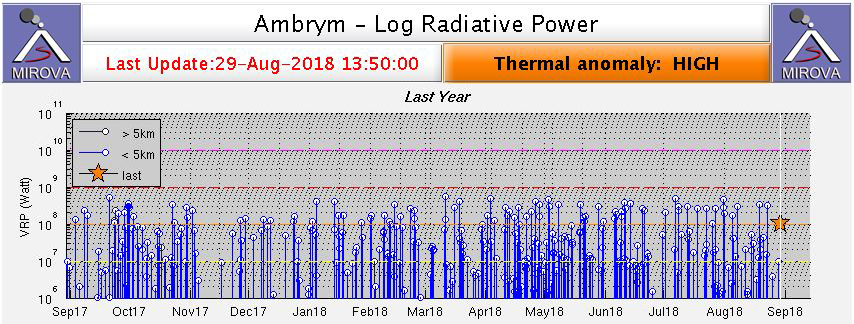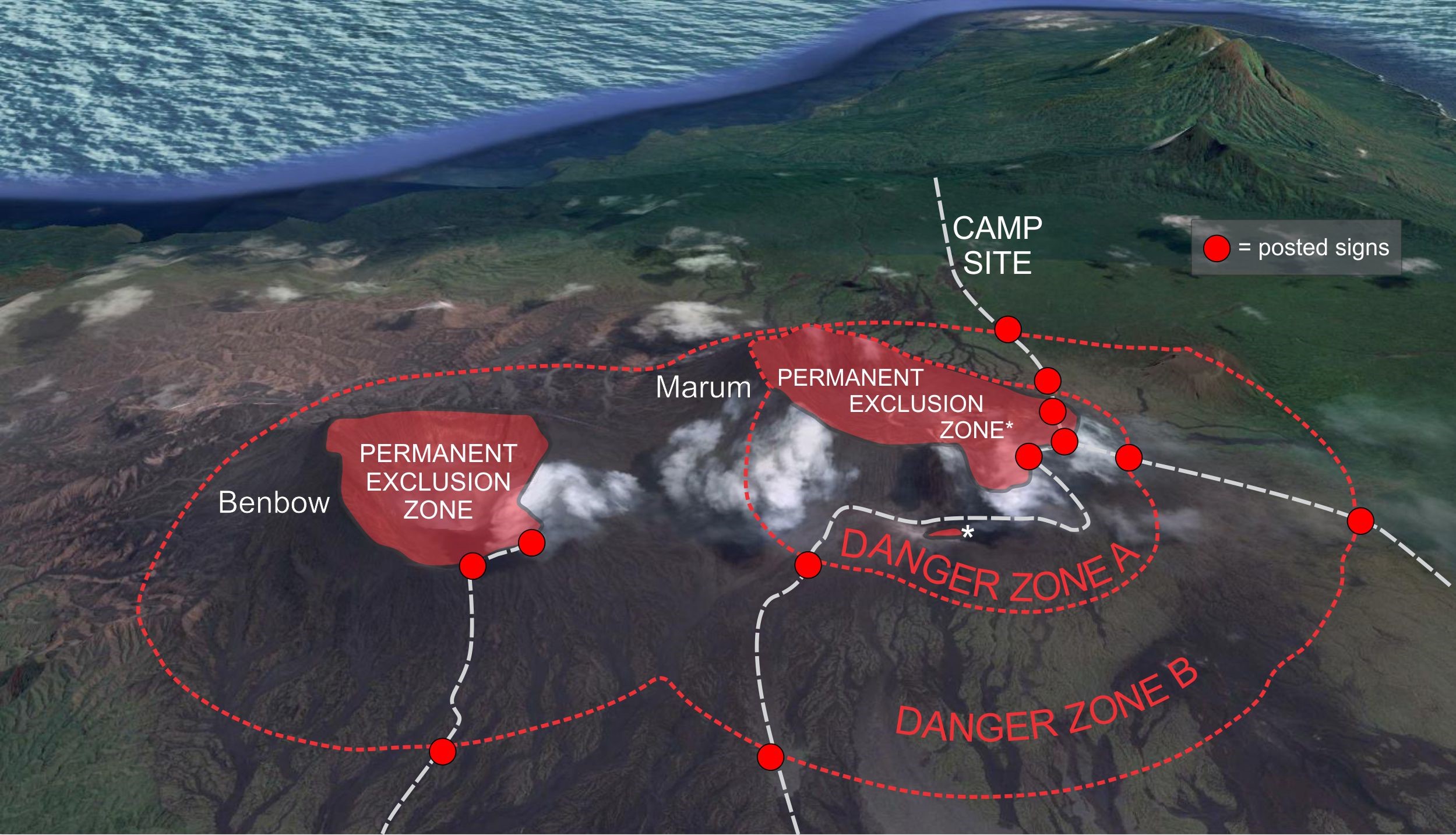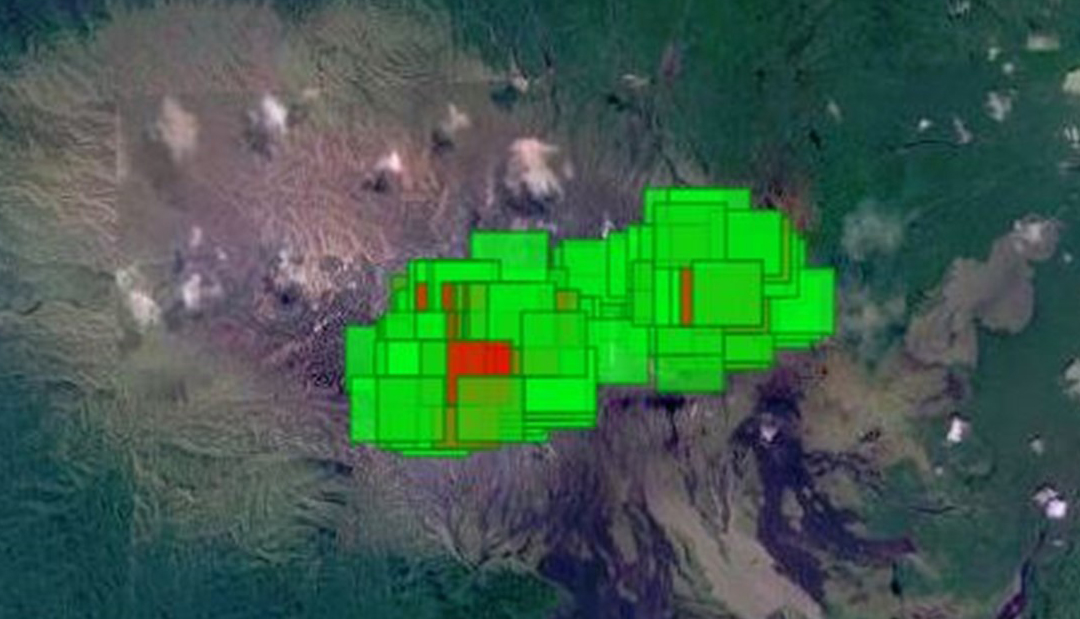Report on Ambrym (Vanuatu) — July 2018
Bulletin of the Global Volcanism Network, vol. 43, no. 7 (July 2018)
Managing Editor: Edward Venzke.
Research and preparation by Sara Arav-Piper.
Ambrym (Vanuatu) Benbow and Marum lava lake activity continues with steam and gas emissions through June 2018
Please cite this report as:
Global Volcanism Program, 2018. Report on Ambrym (Vanuatu) (Venzke, E., ed.). Bulletin of the Global Volcanism Network, 43:7. Smithsonian Institution. https://doi.org/10.5479/si.GVP.BGVN201807-257040
Ambrym
Vanuatu
16.25°S, 168.12°E; summit elev. 1334 m
All times are local (unless otherwise noted)
Ambrym volcano, located in Vanuatu along the New Hebrides Island Arc, consists of a large 12-km-diameter caldera with two active craters, Marum and Benbow. Historical activity has occurred at summit and flank vents, producing moderate explosive eruptions and lava flows that reach the coast. Historically important eruptions date back two centuries, including extra-caldera W-flank lava flows that caused destruction in coastal areas in 1820, 1894, 1913, and 1929. Since then, there have not been extra-caldera lava eruptions, although the areas around Marum and Benbow craters remain hazardous. The Vanuatu Meteorology and Geo-Hazards Department (VMGD) located in Port Vila, Vanuatu, is responsible for monitoring ongoing activity at Ambrym.
During January through June 2018, volcanic activity was confined to the eruptive vents of Benbow and Marum craters, including ongoing lava lake activity inside the active vents, substantial degassing, and emission of steam clouds. The Volcanic Alert Level remained at Level 2 on a scale from 0 to 5 with five being the highest (figure 30). At Level 2 ('Major Unrest') the danger is restricted to the active craters and the Permanent Exclusion Zones, which are located within a 1 km radius around Benbow crater and about a 2.7 km radius around Marum crater (figure 38).
VMGD reported that the lava lakes in Benbow and Marum craters continued to be active and produced gas and steam emissions on 30 January, 19 March, and 25 April 2018. More sustained and substantial emissions were reported on 7 June.
During the reporting period, numerous thermal anomalies were detected by the MODIS satellite instruments and subsequently analyzed using the MODVOLC algorithm, possibly reflecting lava lake activity in Benbow and Marum craters (figures 39 and 40). The MIROVA (Middle InfraRed Observation of Volcanic Activity) system also detected numerous hotspots almost every day (figure 41).
 |
Figure 41. Plot of MODIS thermal infrared data analyzed by MIROVA showing the log radiative power of thermal anomalies at Ambrym for the year ending on 29 August 2018. Courtesy of MIROVA. |
Geological Summary. Ambrym, a large basaltic volcano with a 12-km-wide caldera, is one of the most active volcanoes of the New Hebrides Arc. A thick, almost exclusively pyroclastic sequence, initially dacitic then basaltic, overlies lava flows of a pre-caldera shield volcano. The caldera was formed during a major Plinian eruption with dacitic pyroclastic flows about 1,900 years ago. Post-caldera eruptions, primarily from Marum and Benbow cones, have partially filled the caldera floor and produced lava flows that ponded on the floor or overflowed through gaps in the caldera rim. Post-caldera eruptions have also formed a series of scoria cones and maars along a fissure system oriented ENE-WSW. Eruptions have apparently occurred almost yearly during historical time from cones within the caldera or from flank vents. However, from 1850 to 1950, reporting was mostly limited to extra-caldera eruptions that would have affected local populations.
Information Contacts: Geo-Hazards Division, Vanuatu Meteorology and Geo-Hazards Department (VMGD), Ministry of Climate Change Adaptation, Meteorology, Geo-Hazards, Energy, Environment and Disaster Management, Private Mail Bag 9054, Lini Highway, Port Vila, Vanuatu (URL: http://www.vmgd.gov.vu/, https://www.facebook.com/VanuatuGeohazardsObservatory/); Hawai'i Institute of Geophysics and Planetology (HIGP) - MODVOLC Thermal Alerts System, School of Ocean and Earth Science and Technology (SOEST), Univ. of Hawai'i, 2525 Correa Road, Honolulu, HI 96822, USA (URL: http://modis.higp.hawaii.edu/); MIROVA (Middle InfraRed Observation of Volcanic Activity), a collaborative project between the Universities of Turin and Florence (Italy) supported by the Centre for Volcanic Risk of the Italian Civil Protection Department (URL: http://www.mirovaweb.it/).




